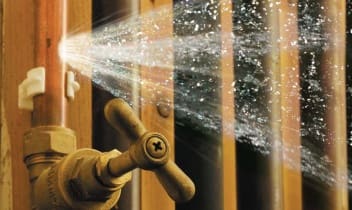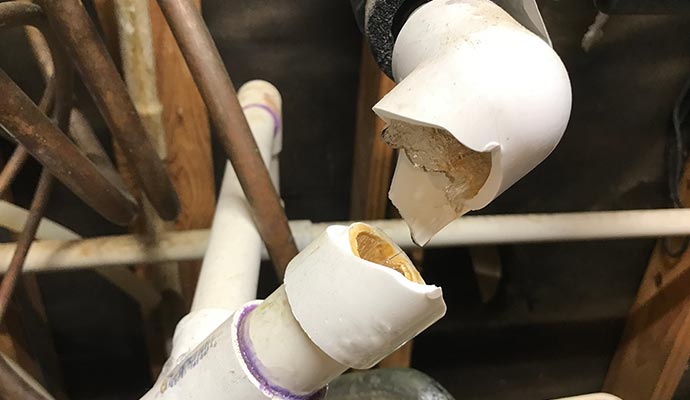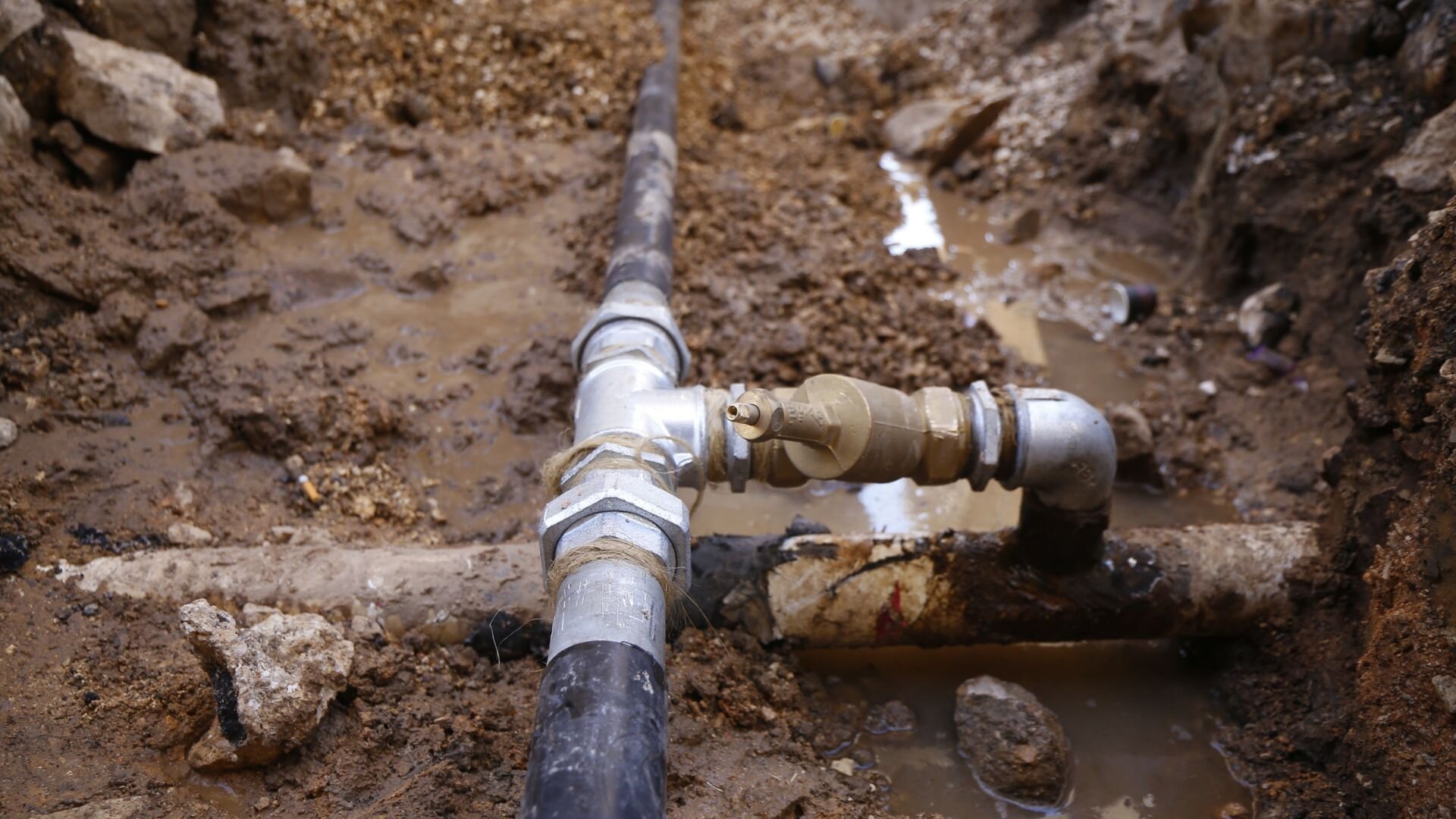Signs of a Burst Pipe: How to Identify and Address the Issue Before It Escalates
Signs of a Burst Pipe: How to Identify and Address the Issue Before It Escalates
Blog Article
Avoiding Burst Pipeline: Necessary Tips to Shield Your Plumbing
Protecting against ruptured pipes is a crucial worry for property owners, specifically throughout colder months when the danger of cold is enhanced. Executing strategic actions such as appropriate insulation, regular examinations, and maintaining constant indoor temperature levels can dramatically reduce the likelihood of pipeline failing.
Understand Pipeline Vulnerabilities
Recognizing pipeline susceptabilities is vital for reliable pipes maintenance and preventing pricey damage. A number of variables add to the sensitivity of pipes to ruptureds, consisting of material structure, age, and environmental conditions. Older pipelines, especially those made from galvanized steel or polybutylene, frequently degrade over time, causing boosted danger of tears and leaks.
Temperature changes can likewise considerably effect pipeline honesty. In colder climates, water trapped in pipelines can ice up, putting in and expanding stress on the pipeline walls, which may eventually lead to a burst. High water pressure can strain pipes, specifically at bends and joints, increasing the probability of failing.

Insulate Water Lines Appropriately
Proper insulation of pipelines is vital for stopping cold and succeeding ruptureds throughout cold weather (burst pipe). Insulating your plumbing system properly safeguards against temperature goes down that can lead to costly damage. Begin by identifying vulnerable areas where pipelines are revealed to exterior temperature levels, such as cellars, attics, and outside walls
Usage foam pipeline insulation sleeves or wrap insulation tape around these areas to offer a protective barrier. Guarantee that all sections of the pipelines, particularly those with minimal warmth direct exposure, obtain appropriate insulation. Pay unique interest to fittings and joints, as these are a lot more susceptible to freezing.
When insulating, it's important to select materials that satisfy regional building regulations and are suitable for the specific atmosphere. Fiberglass insulation is commonly suggested for its thermal resistance buildings. Furthermore, take into consideration utilizing heat cable televisions or tape in severe problems, which can be plugged in to offer extra heat
Consistently examine insulated pipes for any signs of wear or damages, as endangered insulation can lessen its performance. By taking these proactive procedures, you significantly lower the danger of pipe bursts, guaranteeing a reliable plumbing system throughout the winter season.
Maintain Regular Temperature
A steady indoor temperature level is necessary for avoiding ruptured pipelines throughout the cold months. When temperature levels decrease, water within pipes can freeze, increasing and creating pressure that may inevitably trigger the pipes to ruptured. To mitigate this danger, property owners need to maintain a constant temperature level throughout their living room, preferably no lower than 55 ° F(13 ° C)Utilizing a programmable thermostat can assist take care of indoor temperature levels efficiently, ensuring that rooms with plumbing stay cozy also when your home is vacant. Pay unique attention to areas that are a lot more at risk to cold, such as attics, cellars, and garages. Keeping cupboard doors open under sinks can additionally enable warmer air from the home to circulate around plumbing.
In enhancement, it is prudent to enable faucets to drip a little throughout extreme cold snaps. This small flow of water can avoid here are the findings freezing by reducing stress within the pipes. Additionally, during specifically extreme weather condition occasions, think about briefly putting on hold any nighttime setbacks on your thermostat to keep a steady warm setting. By implementing these strategies, homeowners can considerably lower the danger of pipeline bursts and secure their pipes systems versus the harsh wintertime components.
On A Regular Basis Inspect Plumbing
Normal examinations of pipes systems are vital for preventing ruptured pipes and preserving general home honesty. Throughout these examinations, it is vital to take a look at noticeable pipelines for indications of corrosion, leaks, or use.
Furthermore, examining connections and joints is important, as these points are commonly vulnerable to leakages. Home owners ought to likewise evaluate water pressure degrees, as extreme stress can stress the pipes system and raise the danger of pipeline ruptureds.
Consider scheduling professional plumbing assessments at least yearly, specifically before winter months, to guarantee your system is planned for chillier temperature levels. Regular inspections not just aid in identifying immediate worries however also foster long-lasting upkeep strategies that can boost the life expectancy of your pipes system. By being positive in your strategy, you can protect your home versus the expensive and disruptive repercussions of ruptured pipelines. Prioritizing pipes assessments is a financial investment in your home's health and wellness and security.
Know Emergency Situation Treatments
Understanding emergency procedures is crucial for every home owner, specifically after carrying out routine plumbing examinations. Being prepared for a pipes emergency can considerably mitigate damage and conserve costs.
Next, keep vital tools handy. A pipes emergency situation kit should include a wrench, bettor, and towels, in addition to a flashlight and a container for small leaks. In addition, consider having the call info for a trusted plumbing technician easily offered, must the situation rise past your control.
If you spot a leakage or burst pipeline, promptly shut off the water and notify your plumber. Additionally, record the damages with photographs for insurance functions. burst pipe. Understand the signs of possible pipes issues, such as unusual water stress variations or damp spots on walls
Eventually, positive understanding and quick action are important in taking care of plumbing emergencies, guaranteeing your home continues to be safeguarded and decreasing possible damages.

Conclusion
To conclude, preventing ruptured pipes demands a multifaceted technique that consists of understanding pipe susceptabilities, proper insulation, preserving regular Check Out Your URL indoor temperatures, normal evaluations, and expertise of emergency procedures. By applying these vital strategies, the danger of pipes failings can be significantly decreased, therefore guaranteeing the long life and efficiency of the pipes system. Proactive measures not only guard against prospective damages yet also add to total water preservation and the defense of building.
In colder environments, water entraped in pipelines can ice up, putting in and increasing pressure on the pipe walls, which might inevitably lead to a ruptured. When temperature levels decline, water within pipes can freeze, developing and broadening stress that may ultimately trigger the pipelines to ruptured. By implementing these hop over to here techniques, homeowners can dramatically minimize the threat of pipe bursts and protect their plumbing systems against the extreme wintertime aspects.

Report this page